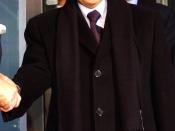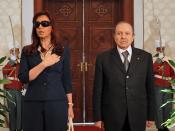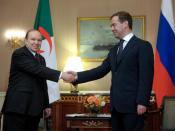Algeria has undergone a long history of revolutions and regime change, so the political climate is quite dynamic and is often shifting. At the moment the country is a constitutional republic with a democratically elected government, however the military in practice holds the major power behind the government. In the early 1990's the government has changed from socialism to a free market economy which has held a large amount of support.
In 1991 there was a guerilla conflict or Algerian Civil War which resulted in more than 100,000 deaths. After this the security situation in Algeria has improved quite dramatically.
Algeria is a multi-party state; this is under the 1976 constitution (which was modified in 1979, 1988, 1989 and 1996). All parties have to be approved by the Ministry of the Interior. There are about 40 legal political parties and according to the constitution no party can be formed unless it is "based on the differences in religion, language, race, gender or region."
The head of the state is the President of the republic who is elected on a five year term that can be renewed once. Algeria has universal suffrage meaning anyone can vote. The president is head of the Council of Ministers and of the High Security Council and appoints the Prime Minister who appoints the council of ministers.
President - Abdelaziz Bouteflika
Prime Minister - Ahmed Ouyahia
The Algerian Parliament is bicameral (consisting of two houses). There is the lower chamber known as the People's National Assembly (APN) which has 380 members. Then there is the Upper chamber, the Council of Nation with 144 members. The APN is elected every 5 years - the next one is due in 2009. Two-thirds of the Council of Nation are elected by regional authorities as the remaining third is...



Political Structure of Algeria
Though this is quite a short essay, it contains a lot of useful content. I found it very informative and it seems to thoroughly summarize its title. I would have liked to have read more about how the military controls the government since that would seem to have a lot to do with the political structure; but nonetheless, good job!
0 out of 0 people found this comment useful.